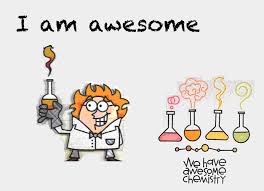Zaina Siddiqi
AP Chemistry 🧪
269 resourcesSee Units
Imagine you have a bathtub that is being filled with water from a faucet at a certain rate and drained out through a drain at another rate. At the beginning, the water level in the tub is low, but as the faucet continues to add water and the drain continues to remove it, the water level eventually reaches a steady state where the rate at which water is being added to the tub is equal to the rate at which it is being removed.
In this analogy, the faucet represents the rate at which reactants are being added to a chemical reaction and the drain represents the rate at which products are being removed. Just like in the bathtub, the concentrations of the reactants and products in a chemical reaction will eventually reach a steady state where the rate of reactant consumption is equal to the rate of product formation.
In steady state approximation, we assume that the reaction has reached this steady state and we can use the steady state concentrations of reactants and products to calculate the rate of the reaction. This can help simplify the mathematical treatment of the reaction, as we do not have to consider the time-dependent changes in concentrations.
If the first step is not a slow step
USE STEADY-STATE APPROXIMATION!!!
At equilibrium, the forward and backward rate is the same. Because of this, you can substitute things from the fast rate step into the slow rate step. Here's an example:
Step 1: 2NO ←→ N₂O₂ Fast
Step 2: N₂O₂ + H₂ → H₂O + N₂O Slow
Our rate law for the fast step of this equation is rate=kₐ[NO]²=kₑ[N₂O₂].
Note, N₂O₂ is on both sides of the equation at different steps. We can call this an intermediate.
If N₂O₂ started on the reactant side, it would be labeled a catalyst!
Because N₂O₂ is on both sides, we can cancel it out:
Step 1: 2NO ←→ N₂O₂ Fast
Step 2: N₂O₂ + H₂ → H₂O + N₂O Slow
The new overall balanced equation is 2NO+H₂→H₂O+N₂O.
At the slow step, our rate would be rate=k[N₂O₂][H₂]. However, this does not work because N₂O₂ is not in the overall reaction.
We will substitute the intermediate for the other reactant!
For our fast equilibrium step, our rate law is as follows:
rate=kₐ[NO]²=kₑ[N₂O₂].
Then, we solve for the intermediate/catalyst.
rate=(kₐ/kₑ)[NO]²=[N₂O₂]
(kₐ/kₑ)=k'
We plug our new equation into the slow step to get the answer below.
rate=k*k'[NO]²[H₂], k*k' can be set to k" in order to give us our final equation:
rate=k"[NO]²[H₂]
GOOD LUCK! Practice makes perfect 😊

Image courtesy of SDMESA.
Browse Study Guides By Unit
⚛️Unit 1 – Atomic Structure & Properties
🤓Unit 2 – Molecular & Ionic Bonding
🌀Unit 3 – Intermolecular Forces & Properties
🧪Unit 4 – Chemical Reactions
👟Unit 5 – Kinetics
🔥Unit 6 – Thermodynamics
⚖️Unit 7 – Equilibrium
🍊Unit 8 – Acids & Bases
🔋Unit 9 – Applications of Thermodynamics
🧐Exam Skills
📚Study Tools

Fiveable
Resources
© 2025 Fiveable Inc. All rights reserved.